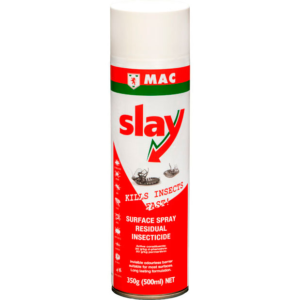Bed Bugs get a particularly bad reputation because, as an infestation, they are notoriously tough to get rid of. Tiny, hardy, fast breeders and opportunistic travellers, Bedbugs can become a problem pretty fast. Because they feed on blood, they can leave an itchy trail of bites all over your body if they manage to get into your bedroom, making them not just a nuisance but an active disturbance that interferes with your sleep.
Bed bugs persist as a significant issue in developed countries, Australia and New Zealand included. The methods for controlling these pests have advanced rapidly, necessitating an updated version of the ‘Code of Practice for the Control of Bed Bug Infestation in Australia’ (CoP). Until recently, during the resurgence of modern bed bug infestations, encounters with these insects primarily occurred in sleeping areas.
Anything that bites is a less-than-desirable house guest, but because they inhabit spaces like bedrooms, they seem much more invasive. When infestations become widespread, like with the 2023 European outbreak, they can cause a bit of panic amongst hoteliers and travellers alike.
You can fight Bedbugs on your own with the right products, and it can take time if the infestation isn’t caught early enough. During and after treatment, check the infested areas about once every seven days for signs of activity. Patience and persistence are recommended for an effective outcome.
SHOP THE RANGE!
-
TDSIMAGESDSMPIDMCAQRECYCLE
-
TDSIMAGESDSMPIDMCAQRECYCLE
What are bedbugs?
Before we talk about how to get rid of bedbugs, it’s important to understand what they are and how to identify them so you don’t waste precious time using the wrong products for the job.
There are two primary varieties of bed bugs: the Common bed bug and the Tropical bed bug. You can treat infestations of either the same way. Bedbugs are tiny, wingless insects that are about the size of an apple seed. They are brownish-red in colour once they have consumed blood and leave quite a bit of evidence around their home. Their bodies are typically around 4 to 7 mm long and have a flat oval shape. Young bed bugs have a similar appearance but are of a smaller size. The eggs of bed bugs are approximately 1 mm in length and are white in colour.
Bed bugs, belonging to the Cimex genus, are diminutive insects that primarily feed on blood, which they obtain from warm-blooded creatures such as humans, cats, and dogs. In contrast to ants and many other insects, they do not construct conventional nests; instead, they gather in clusters to create a habitat. These gatherings are usually contained within a limited area, typically within a few meters, but they can travel up to 30 meters in search of sustenance when it’s in short supply.
How do I know I have bed bugs and not another kind of insect?
Bedbugs can look like a lot of other little insects, so if you are not sure if what you are finding are bedbugs, then trap one in a glass jar and seek advice from a pest control expert.
Certain people may not exhibit any response to bed bug bites, whereas others might experience allergic reactions to the bites. In addition to recognising the bites and physically observing the insects, several other indicators can be helpful in identifying a potential bed bug infestation. These signs include:
- The presence of dark faecal spots on your bed linens.
- Small bloodstains on the linen.
- A musty or unpleasant odour.
- Discovering eggshells or the shed skins of these insects.
- Bites/welts on the body in a line or circle
If you don’t see any of these signs, it’s possible that you are experiencing a different kind of pest infestation.
Tropical bed bugs bear a resemblance to the common bedbug, but their habitat is primarily in tropical regions, rendering them less prevalent globally than their common counterparts. Unlike the common bed bug, the tropical variety features a less pronounced u-shaped pronotum in the neck region. Due to them being less common, there is comparatively less comprehensive knowledge about tropical bed bugs. Nevertheless, research indicates that they lay fewer eggs but exhibit a swifter developmental pace.
How to get rid of bedbugs - a guide
How to get rid of bedbugs can require employing an approach known as “integrated pest management” (IPM), which combines methods that carry minimal health and environmental risks. For treatment of an existing infestation and for preventative measures, try the following:
- Declutter and thoroughly clean, with a special focus on your bedroom.
- Re-position your bed, ensuring it’s away from walls or furniture and flip the mattress.
- Daily vacuuming and treating of mouldings, windows, and floors is essential. Pay close attention to vacuuming the sides and seams and both sides of mattresses, box springs, and furniture. Empty the vacuum or change the bag immediately, then dispose of it in an airtight container or bag outdoors.
- Launder sheets, pillowcases, blankets, and bed skirts and subject them to a hot dryer for a minimum of 30 minutes.
- It’s time to treat the infestation with MAC Slay Bedbug and Mite Insecticide. Apply as a spot treatment to headboards, furniture, base/skirting boards, mattresses, wall hangings, floor coverings, window treatments, luggage, upholstered furniture and pet sleeping areas as per the instructions. The product offers an immediate knockdown of affected bedbugs and mid-term residual properties to counter hatching bedbugs for up to 2 weeks.
- You can prevent bedbugs by treating rooms preemptively with MAC Slay Bedbug and Mite Insecticide spray to stop infestations from moving in, and even treat your luggage with the MAC Slay Surface Spray before departure to get rid of any unwanted stowaways. MAC Slay is used by professional pest controllers in institutional, commercial and domestic settings – making it appropriate for any bedbug infestation and prevention.








